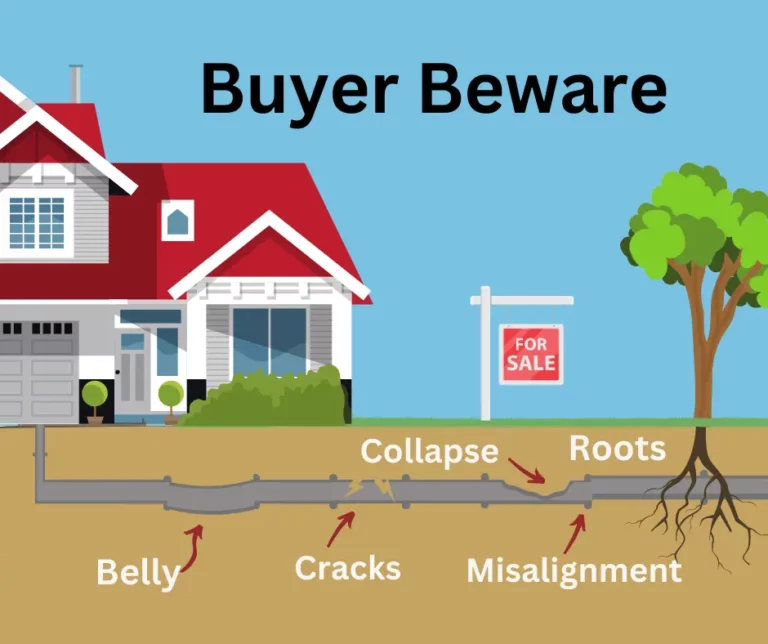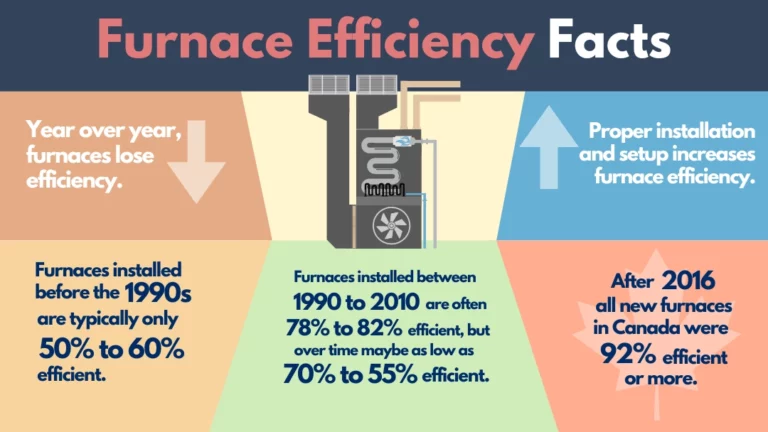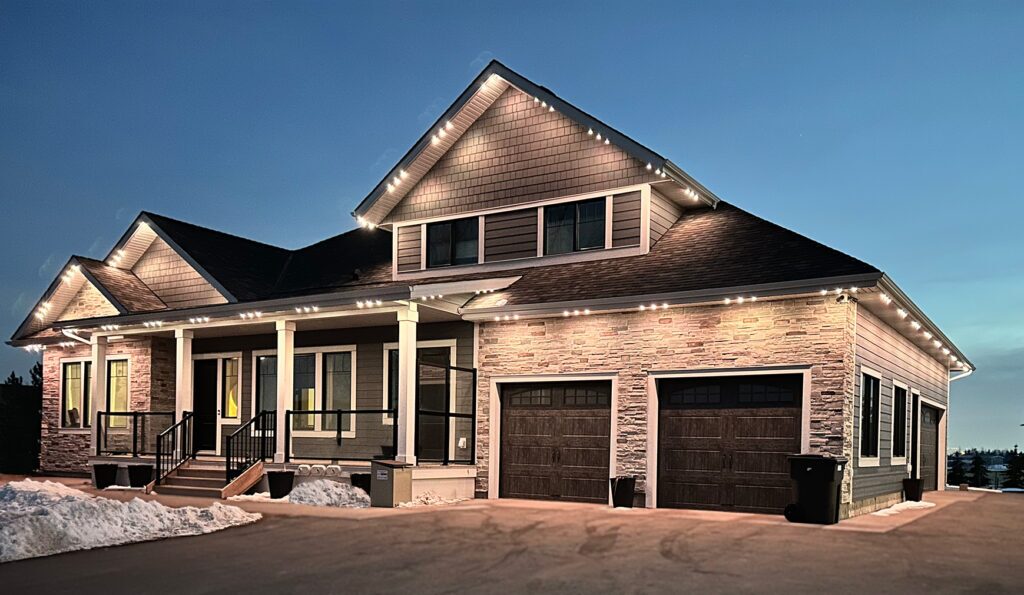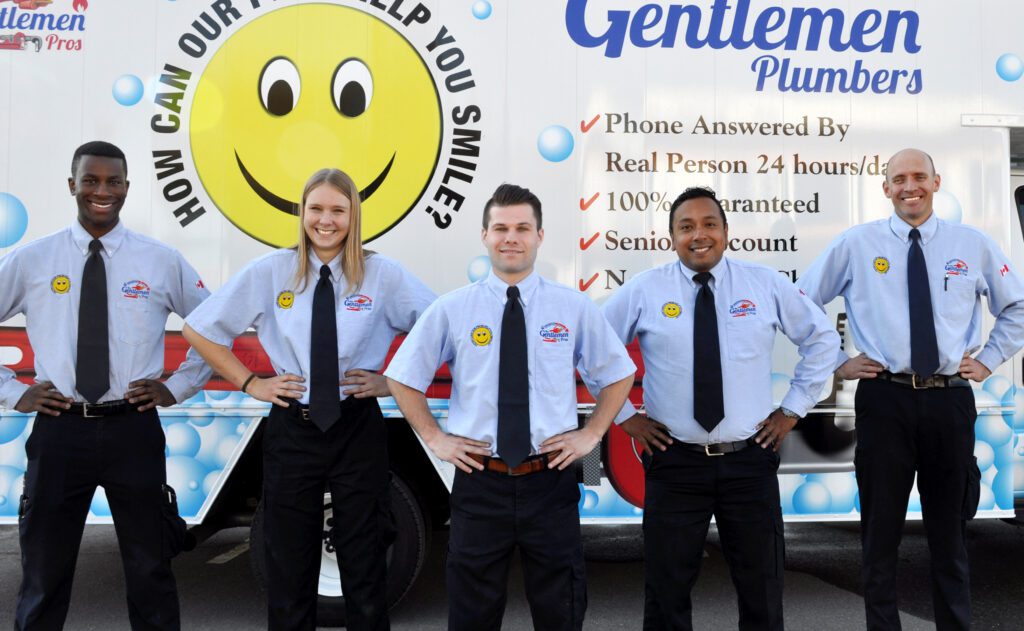Same Day Service
Since 2002


Don’t be caught off guard with a costly repair bill. Learn about 10 things that often end up costing a lot of money to fix.
If you’re buying a house or living in an older home, consider investing in the following 10 things.
We often lament that they don’t make things like they used to. The old fridge in your garage or the solid oak nightstand might be living proof that many things were better made in yesteryear.
One big exception is your furnace!
Your furnace isn’t a retro collectible that will add charm to your aging home. Rather, an old furnace is a money-wasting machine, consuming your cash with every utility bill payment.
How much money are you throwing away exactly? The numbers are staggering.
If you have a home that was built before 1990 and the furnace was never replaced, then you can safely assume you have a standard efficiency furnace. (It sounds good, right? Think again.)
A standard furnace may only return 50 to 60 units of heat for every 100 units of energy it uses. That is assuming your standard efficiency furnace was installed correctly, is the right size for your home, and has been well-maintained.
Yikes!

Mid-efficiency furnaces are common in homes built between 1990 and 2010. Upon installation, mid-efficiency natural gas furnaces are typically 78% to 82% efficient. Assuming proper installation, size and maintenance, you could still be throwing away 20 units of energy for every 100 units purchased.
As a mid-efficiency furnace ages, it becomes even less efficient. Over time, a mid-efficiency furnace may be only 55% to 70% efficient. Potentially you could be throwing 45 to 30 units of energy away with every 100 units purchased.
High-efficiency furnaces are so much better that they are actually mandated in every new home. You don’t have to be concerned about your carbon footprint to recognize that consuming less energy will save you money.
Most importantly, your budget is protected as cold weather comes or as energy prices increase.
A new furnace is a gift that keeps on giving.
Over time, as your furnace runs less efficiently, prepare to evaluate if it is time to replace your furnace. Because it is still working is not a good enough reason to keep it.
Don’t test your furnace against a cold snap to see how far you can push its boundaries.
Beware of Poly-B piping if your home was built or renovated between the mid-1970s and the 1990s.
Polybutylene (Poly-B) piping became a popular plumbing material because it was a cheap alternative to copper piping, flexible, and easy to install.
Unfortunately, within a decade many homes with Poly-B pipes began to fail. Often Poly-B would leak slowly, creating water damage but also providing a damp environment for mold to flourish.
If you have Poly-B pipes in your home, it is not a question of if they will fail, but when.
Unfortunately, many insurance companies will not cover water damage if the Poly-B piping fails. Many insurance companies will not insure homes with Poly-B piping.
Poly-B class-action lawsuits only paid out if the plumbing was replaced by 2005 or within 15 years of being installed.
Poly-B, polybutylene, is light grey plastic piping with copper, brass, or plastic fittings. Poly-B can be identified by one of our technicians if you are not certain.
Most likely, you do not have Poly-B in your home if it was built before or after the 1990s.
In 1995, the CSA (Canadian Standard Association) stipulated that it was not to be used for continuous circulating hot water lines.
Poly-B production stopped in 1998 but was not removed from the National Plumbing Code of Canada until 2005. Plumbing codes are not retroactive.
It is estimated that 148,000 homes in Alberta have Poly-B.
Make a plan to replace the Poly-B plumbing in your home. Invest in your home!
The cost of not replacing Poly-B can be more expensive over time as leaks and deterioration occur. Poly-B may devalue your home when you go to sell it. Place a call with your insurance company. Ensure your policy covers the cost of Poly-B plumbing issues.
Has scanning through an old family photo album of the 1960s and 1970s prompted the question “What were they thinking?”
Along with some questionable fashion choices, hairstyles, and home decor of that era, there were some sketchy building practices!
More serious than a fashion faux pas was the regrettable use of aluminum wiring in the 1960s and 1970s.
Do you or a family member have a home that was built or renovated between 1965 and the late 1970s? If so, beware of aluminum wiring!
The answer to the rising cost of copper, was aluminum wiring. It was a cheap alternative to copper wiring, but within a decade a pattern of electrical fires was identified in homes with aluminum wiring.
Aluminum wires expand and heat up as electricity passes through them – three times as much as copper wires.
When the electricity is not flowing through the aluminum wires and connections, the wire contracts and cools.
Due to the expanding and contracting of aluminum wires, connections are more likely to become loose. If the connection becomes loose, it can create an arc, which may result in a fire.
Another risk of expanding and contracting makes the wire more likely to be exposed to oxygen. The oxidization, resulting in aluminum oxide, can cause the connection point to become even hotter because of the increased resistance.
Aluminum wiring is softer and more malleable than copper wiring. Unfortunately, this means that it will break down faster and is more susceptible to compression. For example, if it’s screwed in too tightly, the aluminum wire is more likely to overheat at the compression points.
Aluminum wiring also is more likely to have excessive vibrating, which can cause the connection to become loose.

If your home was built or renovated between 1965 and the late 1970s, chances are far greater you have aluminum wiring in your home.
Aluminum wiring will be a light silver colour compared to the copper colour.
Find a place in your home where the wires are exposed, such as an unfinished basement or utility room.
On the outside insulation of the wire, you may notice printed or embossed markings. Every few feet you should notice “AL” or “Aluminum”.
#2 Investigate if your insurance provider will provide coverage for a home with aluminum wiring.
This is extremely important because you would not want to void the insurance on your home.
Two important things need to be done if you discover aluminum wiring in your home.
#1 Be sure to have an electrical inspection. Our trusted electrician can identify problems, and create a remediation plan for your home. You may notice that some remediation has happened because of the aluminum wire. Some solutions may be better than others.
#2 Investigate if your insurance provider will provide coverage for a home with aluminum wiring.
This is extremely important because you would not want to void the insurance on your home.
Is your holiday festive spirit competing with your overwhelming desire to forgo the painstaking task of putting up Christmas lights and taking them down again? (Unless of course, you are “that neighbour”, the one who doesn’t bother taking them down.)
Fighting winter whether to put up or take down your festive lights is laborious.
Perhaps you are waiting for a spell of warmer weather, but more often than not when that beloved weekend arrives, there are so many things you would rather do.
No matter how great your investment is on your festive display, each year the Jones’ are doing bigger and better.
Is it time to invest in year-round Permanent Christmas Lights?
Did you know that The Gentlemen Pros will provide a lifetime warranty on the lights we install for as long as you own your home?

We install the best quality permanent 30mm RGB-SPI lights that are available!
The lights are product tested and evaluated at the factory for a ULC rating.
The lights can withstand the Alberta weather. They are completely waterproof for their lifetime (with an ip68 rating), work in temperatures as low as -55 degrees Celsius, and are also impact resistant.
The lights are fireproof, rated V-0 (meaning they cannot start or sustain a flame). They are less susceptible to surge damage by having a heat disbursement plate built into them.
Each connection is soldered, and a Heat Shrink is applied for the most reliable, longest-lasting connection.
These lights are worth the investment.
Surge protection. Are you protected?
Power surges are more common than most people imagine, and least likely caused by a lightning storm.
Sadly, the power bar in your home office may only be a glorified extension cord and provide minimal protection against power surges.
Lightning-induced surges are very uncommon but when they happen can cause tremendous damage.
Small and more frequent power surge events are common and troublesome when higher-than-normal voltages enter the home.
The electrical overload can be caused by an influx of power when a transformer in your distribution network is turned off or on. This would be considered a major surge event.
Minor surge events could be the cycling on and off of an appliance, such as a dishwasher or dryer. The energy influx distributed through the home when an appliance demands less energy can cause a small power surge.
Over time, power surges (including small power surges) can burn out electronic devices and appliances.
Inside a surge protection power bar is a series of varistors. Varistors are voltage-dependent resistors that divert volts keeping the energy flow constant. Varistors protect a circuit from high-voltage surges.
Varistors are found in most modern electrical appliances and act as internal surge protectors. The number of varistors in a surge protection power bar or appliance varies.
Over time the varistors wear out. In the electrical world, we refer to this as electronic rust. When varistors wear out they can no longer protect devices from abnormal voltages.
Without realizing it, an appliance or electronic device can stop working without warning. Like the straw that broke the camel’s back, one small surge event could irreparably damage an electrical appliance.
Often a homeowner will not be aware that a damaged appliance is the result of surge activity.
Power surge protectors are in place to manage the influx of power. There are two types of surge protectors available for homeowners, using a power bar or whole home protection.
Power surge protectors that plugin, such as a power bar, will offer some protection to appliances and devices plugged into it. The quality of the surge protector will vary depending on the number and strength of the varistors. In many cases, the surge protector is not strong enough to protect from major surge events.
A better solution is whole home power surge protection, which protects the entire home from power surges. This is a better investment for your appliances, electronics, and peace of mind.
Consider all of the appliances and electronics in your home that can be impacted by a power surge event:
Book an electrical inspection to review the options that would provide your home with the most protection and save you the most money.
Imagine after a long night of hosting a house full of relatives you retire to your shower, a place of refuge, only to find the last bit of hot water drained!
How about the time you had an emotional day with your teenager? You escape, intending to soak your stress away, only to discover your adolescent has used all the hot water.
After cleaning the house, a few loads of laundry, and a load of dishes, you start to shower and discover the remaining hot water was only enough to start lathering shampoo. Sadly, you finish rinsing in freezing cold water.
Never run out of hot water again with a tankless hot water heater. Save money on your energy bill each month by only heating the water that is demanded.
As energy prices fluctuate, protect your budget by only heating the water needed.
A full hot water heater tank will continually heat water, even when the water is not needed. The ongoing cost to keep your hot water tank going can be avoided with a tankless on-demand system.
Although the initial cost can be higher, the lifetime savings of a tankless hot water heater can more than make up the difference. Water heating can be one of the most expensive energy costs in your home.
If you are nearing the end of the life of your hot water heater, consider replacing it with a tankless on-demand hot water heater.
Invite one of our technicians to review your hot water heater to ensure that it is working properly and what maintenance is required.
Learn about the tankless hot water heater options available should you need to replace your hot water heater.
Small roots growing in your sewer line can cause devastating effects.
Most often homeowners and landlords discover that roots have infiltrated their sewer line when wastewater backs up into their homes.
A sewer backup is an unpleasant way to discover that roots are clogging your sewer line.
A working sewer line is like a devoted friend that you often neglect but assume will always be there for you.
Most often little thought is given to the consistent service your sewer line provides you. That is until there is a disruption to the flow in your sewer line. Most often a clog is identified only after sewage water is pouring back into your basement.
Your main sewer line faithfully conveys sewer waste from your home to the municipal sewer line day in and day out. Over time the sewer line can crack, crumble, and deteriorate.
Roots, always in search of water, air, and fertilizer, will find all three inside your sewer line.
Cracks in the sewer pipe or joint will allow roots to establish inside your sewer line. After roots have established in your sewer line that begins to block the flow. Acting like a net, roots will catch solid waste and create a clogged sewer line.

Root growth in your sewer line diminishes or prevents the flow of wastewater to the city sewer line, by way of your home sewer line.
Sadly, most often roots are discovered after a plumber is summoned during a catastrophic sewer backup.
Don’t let this happen to you! If your home was built before 1980, it is very likely that your sewer lines are made from cast iron, clay, or no-corrode pipe. Over time these pipe materials will crack, crumble, rust, or decay.
If your home was built after 1980, most likely your sewer line is made from PVC or ABS sewer pipes. If they were installed properly, and the joints are not leaking, it is less likely roots have infested your sewer line.
To be certain, schedule a home inspection where one of our highly qualified technicians can run a camera through your sewer line and evaluate the health of your sewer line.
If you have an older home, your sewer lines are more likely to crack and degrade. Have a sewer line inspection sooner than later to identify options to remediate problems.
There are more options, including less expensive options, if problems are caught and fixed sooner than later.
One of the most invasive problems a homeowner could have is a sewer backing up from the city sewer lines.
After a fast melt or a huge downpour, your city’s sewer system can become overloaded. Sometimes storm drains can fill the city sewer lines pushing past capacity, resulting in the city
wastewater overflowing in your basement.
Sewer backups are disgusting disasters that are expensive to deal with.
A sewer backup is when wastewater leaves your home through the main sewer line towards the city’s sanitary waste treatment plant, instead returns back and enters your home. Yuck!
Most often the sewer waste will return back through a basement floor drain, basement bathtub or shower, or clean out.
Take every precaution to avoid a sewer backup!
Instal a sewer backflow preventer, also known as a backflow valve. It will prevent city wastewater from backing up into your basement.
When operating properly, wastewater and sewage flow out of the house. If the main sewer line becomes overloaded the backwater valve stops water or sewage from flowing into your house.
Whole-home backflow valves are required in some municipalities but were much less common in homes built before 2000.
To ensure you have a backwater valve installed and working properly, schedule a camera inspection for your sewer. (Customers who belong to our Gentlemen’s Promise membership receive a complimentary sewer inspection each year.)
Unfortunately, basements in Alberta flood more often than we expected or are prepared for.
Because basements are the lowest level of a building and either party or entirely below ground they are prone to flooding.
Groundwater, which is water that sits below the ground’s surface, can rise above the basement floor level. This is more likely to happen during melting seasons or rainy seasons.
A crack in the foundation of a home creates a path for groundwater to leak into the home.
Confirm with your insurance provider if your policy covers groundwater damage or seepage.
To prevent basement flooding, consider having a sump pump and barrel installed in your basement.
Sump pumps are installed underneath the floor of the basement to collect groundwater and pump it away from your home before your basement overflows.
A sump pump system has a barrel called a sump, which is the lowest part of the unit. When the barrel fills with water the pump pumps the water to a drain that leads outside away from the foundation of the home.
Sump pumps use a float that detects the water level and activates the pump when the water reaches a particular level.
Not only does a sump pump prevent water from flooding, but it also prevents the growth of mould and mildew, which can have damaging effects on your home.
Mould is most often found in a situation where water is leaky into your home slowly and undetected.
Invite one of our plumbing technicians to perform a home inspection, and help you decide if a sump pump is recommended.
Groundwater, which is water that sits below the ground’s surface, can rise above the basement floor level. This is more likely to happen during melting seasons or rainy seasons.
A crack in the foundation of a home creates a path for groundwater to leak into the home.
Confirm with your insurance provider if your policy covers groundwater damage or seepage.
There are thousands of homes in Canada with circuit breaker panels that are known for starting fires 🔥🔥🔥. If you have a Federal Pioneer electrical panel you may be at risk!
Wondering how thousands of homes could have a circuit breaker panel posing a fire hazard?
In Canada Federal Pioneer Stab-Lok® panels, and in the USA Federal Pacific Electric Stab-Lok® panels were installed in many homes from the 1950s to recently. The main concern was the significant number of breakers’ failure to trip when they were overloaded, or when short-circuited. Consequently, the excess current would heat up the circuit and start a fire. 🔥
In the 1980s concerns were raised, but an investigation wasn’t conclusive. Allegedly improper and deceptive practices were employed for many years to secure UL listings in the United States. 😡
What is UL? Underwriter Laboratories or UL is a worldwide certification that demands successfully meeting stringent safety requirements and other practices. The good news is that in time, in the United States, Reliance Electric Co, the parent company of Federal Pacific Electric, lost its UL listing. (Yeah!! 🎉) Sadly, not before millions of homes were built with FPE Stab-Lok® panels. 😧
In Canada, Federal Pioneer has not lost its UL listing, but has the same circuit breaker design used in the US. Experts and home inspectors across Canada are joining in a voice of warning against Federal Pioneer Stab-Lok®.
Furthermore, other companies have made other products under the Stab-Lok® name or made replacement products. These products have been used in homes across the country, and continue to be used today. Sadly, the Canadian breakers have nearly the same design issues and risks as the US.😫
We recommend having an electrical home inspection. Home inspectors and electricians across the country have expressed the same concern, and recommend homeowners replace their panels if they have a Federal Pioneer panel.
The electrician can identify Stab-Lok® brand products, which went by many different names. The InspectAPedia website provides information on identifying Stab-Lok® products. https://inspectapedia.com/fpe/FPE_Stab_Lok_Identification.php
InspectAPedia is an independent encyclopaedia of building and environmental construction, diagnosis, maintenance and repair. They receive no outside endorsement and highly recommend that Federal Pioneer (and Federal Pacific Electric) panels be replaced entirely.
What if my Federal Pioneer hasn’t had any problems?
Dr. Jesse Aronstein is an electrical engineer who has published many peer-reviewed papers regarding the Stab-Lok® panels and has tested over 4000 breakers. He insists that a visual inspection won’t work and that the only way to identify a defective breaker is by removing and testing them. The expense of doing that would be more costly than a panel replacement.
Most often homeowners don’t know there is a problem with their circuit breaker until the fire trucks show up!! 🚒🧑🚒
